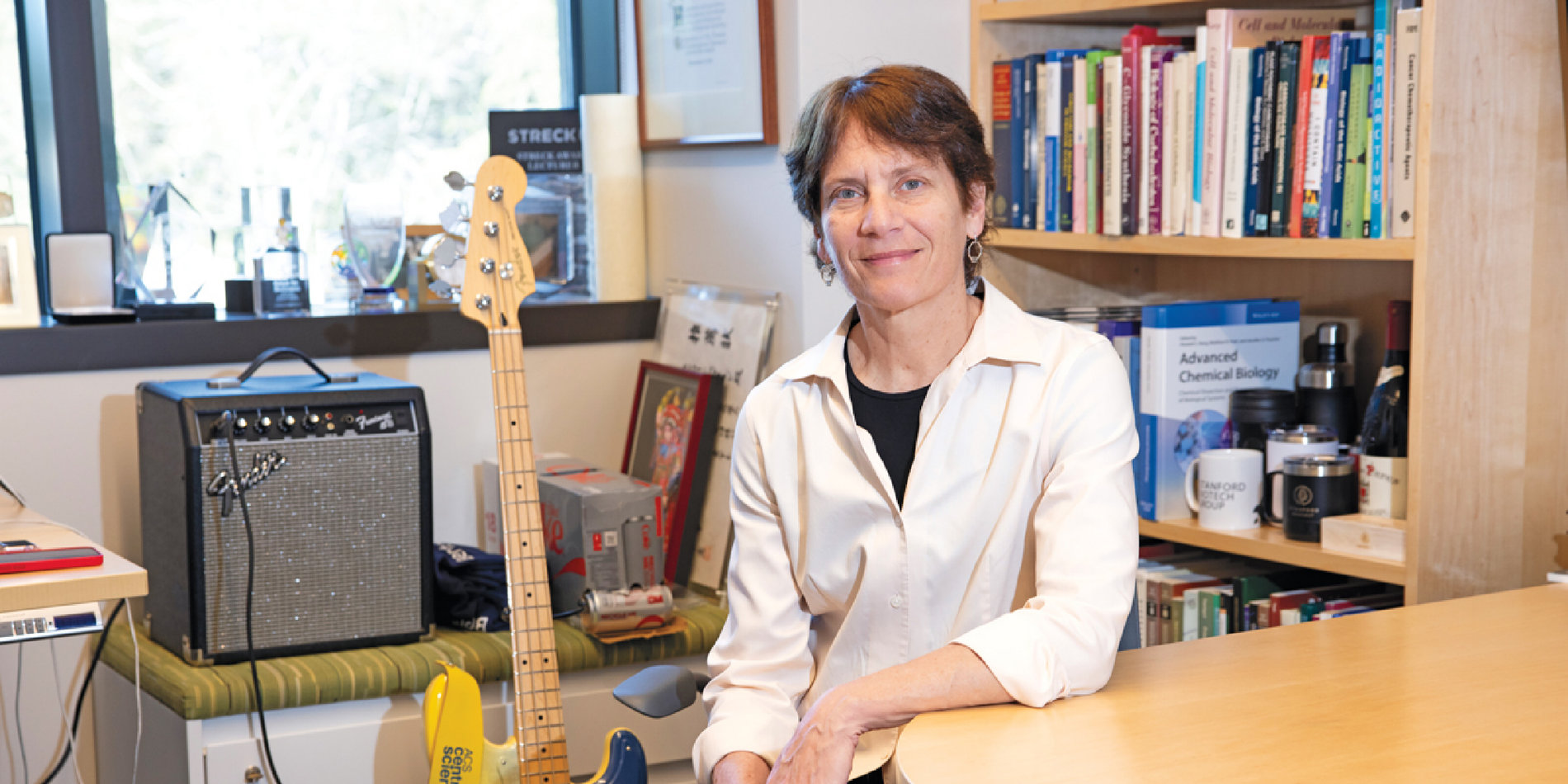Eavesdropping on cellular conversations
The human body is made up of over 30 trillion cells organized into several hundred cell types that constantly respond to changes in our daily lives. To coordinate their activity, cells communicate with each other by secreting molecules that can be interpreted by other cells. But figuring out what these cells are saying is difficult to decipher.

Now, Stanford ChEM-H Institute Scholar Jonathan Long and colleagues at Stanford University have developed a new technique to listen in on these secret conversations. They have identified the molecules secreted by cells in a living mouse — a collection of molecules known as the “secretome”. “These different secreted factors constitute a really fundamental chemical axis of communication in organisms that have more than one cell, like us,” said Long.
The work, which could ultimately reveal how the body responds to many different conditions including exercise, was recently published in the journal Nature Chemical Biology.
To identify all secreted molecules, the researchers used a technique to force different types of cells to make a protein called TurboID, a technology developed at Stanford University by Professor Alice Ting and colleagues. TurboID then adds molecular tags to nearby molecules, making them easy to identify. Essentially, all the molecules near the specific cells making TurboID will get painted with a mark that makes them easy for the scientists to see. In doing so, the team could investigate the secreted molecules of any cell type.
The next step was taking blood samples from the mice and identifying the secreted factors marked by TurboID. These are all the molecules that are normally found in the space between and around cells, carrying out those secret conversations that ensure the cells can work together properly.
Using this approach, the researchers listened to these conversations, for the first time, in an intact living organism. Historically, scientists relied on identifying secreted factors from cells grown in a lab dish and guessing that how cells behave in the lab is the same as how they behave in an organism, explained Long.

But what the researchers really wanted to know was how these molecules around the cells might adjust to changes to normal conditions. “Having lists of everything that’s coming out of the liver is good but having information about how those lists of things are changing, as the perturbation changes, is even better,” said Long.
Long and colleagues fed mice a high-sugar diet known to modify liver cell biology to test whether their new technique could capture dynamic changes in the kinds of molecules the cells secreted. What they found is that mice fed with the high-sugar diet dramatically increased the number of secreted molecules in their blood. Surprisingly, when the team analyzed these secreted molecules they found that the increase was largely due to a single protein, called BHMT, which is normally only found inside the cell.
Long believes the finding that BHMT can be secreted by cells reveals some important characteristics about how cells communicate. “The real take home lesson is that it’s very hard to predict how cells communicate in response to different changes,” said Long, highlighting the need to directly measure secretomes not just of the liver, but throughout the body. Long said that the response to this change in diet was specific, suggesting that these events are highly regulated.
In the future, the team hopes to expand this analysis to more cell types and create a dictionary of secretomes. “While defining the words of the secretome is an important first step, understanding how cells use these words to communicate is the ultimate goal,” Long said. The team also hopes to apply their new technique to understanding other kinds of changes that cells experience, for example, what happens to the secretome when diet, outside temperature or exercise levels are changed?
Scientists have long known that exercise broadly improves human health and induces a plethora of changes to our cells, but a full understanding of those changes remains elusive. “What’s interesting about exercise is that it can’t be recapitulated in a dish, and so this is a very optimal system for studying questions like that,” said Long.
The team hopes to one day identify the molecules that allow people to become healthier with exercise and then use these molecules therapeutically. “There are many people that can’t exercise or can’t exercise efficiently to capture some of those benefits,” explained Long. Just like how the secreted molecule insulin is used to treat diabetes, we may soon be able to use some secreted molecules to reap the vast benefits of exercise.
Long is an assistant professor in pathology and an Institute Scholar at Stanford ChEM-H. He is also a member of Bio-X, the Wu Tsai Neurosciences Institute, and the Stanford Cardiovascular Institute. Biology graduate student Wei Wei and postdoctoral scholar Nicholas Riley are co-first authors on the study. The study was part of a collaboration with Carolyn Bertozzi, the Baker Family Director of Stanford ChEM-H and the Anne T. and Robert M. Bass Professor in the School of Humanities and Sciences. Other Stanford co-authors include Andrew Yang, Joon Kim, Stephanie Terrell, Veronica Li, Marta Garcia-Contreras, and Carolyn Bertozzi.



